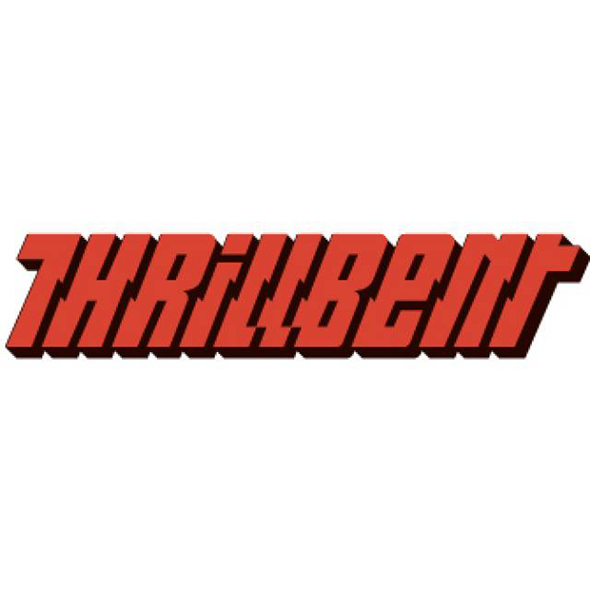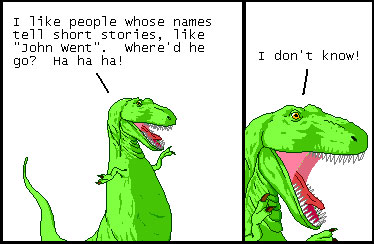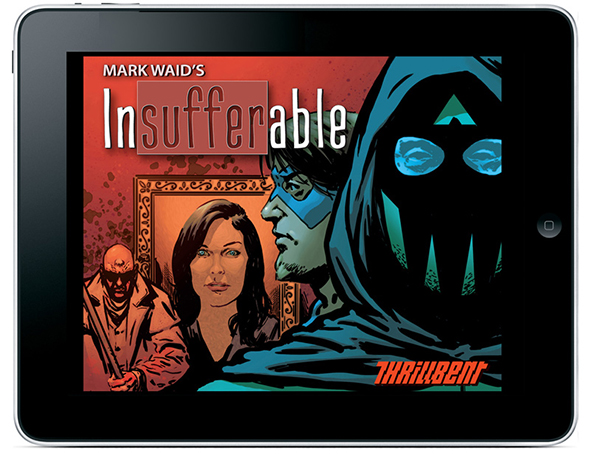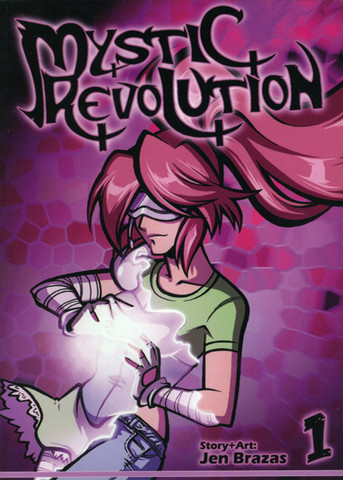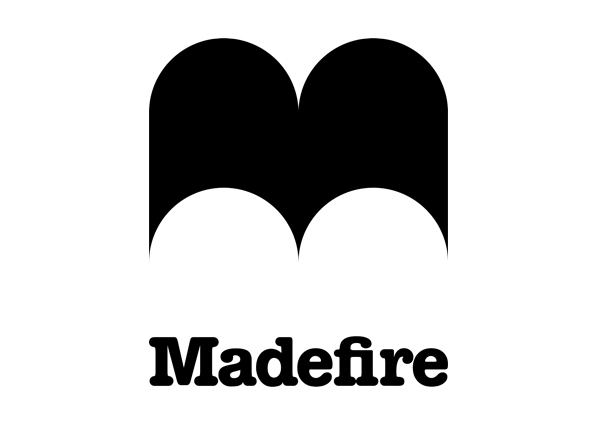Anyone fascinated by the emerging world of digital comics was in for a treat at C2E2, thanks to a panel made up of a group of very diverse, very qualified professionals from the field. The discussion hosted speakers Mark Waid (Co-Founder at Thrillbent), Jen Brazas (creator of the Mystic Revolution webcomic), economics entrepreneur Jordan Plosky (CEO of ComicBlitz) and Beat alumni Todd Allen (The Economics of Digital Comics) and was moderated by Josh Elder of POP Comics and Reading With Pictures. After introductions they dove right into the meat behind both the medium and industry of digital comics.
Each panelist had their own definition of digital comics. Waid stressed that, for him, digital comics did not mean pictures of comics. That’s why at Thrillbent he looks to do the things that print can’t, such as effects like images popping up and disappearing or balloons changing with layering effects. He admitted that it doesn’t always translate beautifully into a print comic, but that’s okay because it’s its own animal.
For Plosky, digital comics primarily meant convenience. He recounted how great it was to start bringing an iPad with comics loaded on to it on a trip instead of loads of books. That’s what brought him to make a “Netflix for comics” with ComicBlitz.
When Brazes hears about digital comics, she thinks about the disappearance, or at least diminishment, of gatekeepers. As a cartoonist she was able to get her work out to a wide audience without any upfront print costs.
As anyone who has read his book knows, journalist Todd Allen separates comics read on a screen into two categories: digital comics and webcomics. Webcomics are things you read online, usually for free. Digital comics, on the other hand, are essentially ebooks like what you might buy for your Kindle.
Moderator Josh Elder discussed how he envisioned a YouTube for comic. He thought about the extraordinarily weird and diverse stuff on it, and believed comics can be the same way. That led to POP Comics, a place to stream comics for free that’s supported by ad revenue.
Elder asked Todd, as the data man, how many readers of digital comics are out there. Allen said it was hard to quantify but hundreds of millions of people might have read at least one webcomic, whereas readers of print is probably only in the low millions. He mentioned Ryan North’s Dinosaur Comics popping up in his Facebook feed frequently, often posted by someone he didn’t even know was into comics.
Elder asked each of the panelists what made them enter into the digital comics realm. Waid had learned from his time as Editor-in-Chief of BOOM! Studios that half the cost of making a comic could be just printing it. He loved the accessibility of digital, and the idea that any time, day or night, you can get something no worry of sellouts.
Plosky dove in because he can’t write or draw but he wanted to be involved in the comics industry in some way. He made a subscription service for comics because he knew the business of similar services for other types of media. Argue that Spotify is killing music, but might be spending more money. From all the data subscription will make ppl buy print comics.
Brazes ventured into digital in 2004 during the webcomics boom. At that time print had started to decline and more people than ever were on web. It was a great way to prove she could make money as an artist so her mom would pay for art school.
Elder mused on how the addition of digital was a fundamental shift the comic book industry hasn’t fully grasped yet. He asked the panelists what they think is coming next. What is going to be the next big thing? Some theories included keynotes like what Apple does and even comics in virtual reality. That led to a passionate discussion about what makes a comic a comic. Waid’s north star is that you control the pacing of the story. Animation and music are interesting but it adds an element of time that the reader doesn’t have control of. Allen compared and contrasted Thrillbent comics from what you see on Madefire. He said that Madefire, which adds atmospheric animation, was getting a little closer towards motion comics, but it still provides an element of control to the reader with the space bar. He praised Thrillbent’s The Eight Seal and Mike Carey’s comic for Madefire for their use of the digital medium.
Next, Elder asked about business models and monetization, and what the options are right now? Waid discussed how Thrillbent entered into a subscription model a year and a half ago after hundreds of comics had been produced for the site. $3.99 a month seemed fair to him and co-owner John Rogers. But he’s learned that, while subscriptions have been solid and growing slowly, they aren’t a sustainable business model. If they could do it again he and John would probably follow the Patreon model with tiers of support.
Patreon was also discussed for webcomics, necessary because of the prevalence of ad blockers in recent years. Brazes shared that her ad revenue had gone from $1000 to $2000 a month to maybe a couple hundred dollars. Nowadays, though, she said there’s crowdfunding for print costs and cartoonists’ livelihoods. While old ways to monetize go away, new methods become possible.
Todd testified to the value of Patreon for digital comics. He knows the people behind it and how dedicated they are to getting artists paid. And crowdfunding in general is a great model. He was privy to a Kickstarter Survey that revealed that 60% of users are backing the creator or concept, and 40%: are backing for the actual product. Even if the comic is available for free, people will come. The 80-20 freemium model demonstrates that 20% of your audience will on average be the source for about 80% of your earnings. If you have a product that people really respond to, the panel seemed confidant that you already have a strong foot forward.


